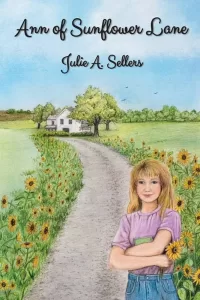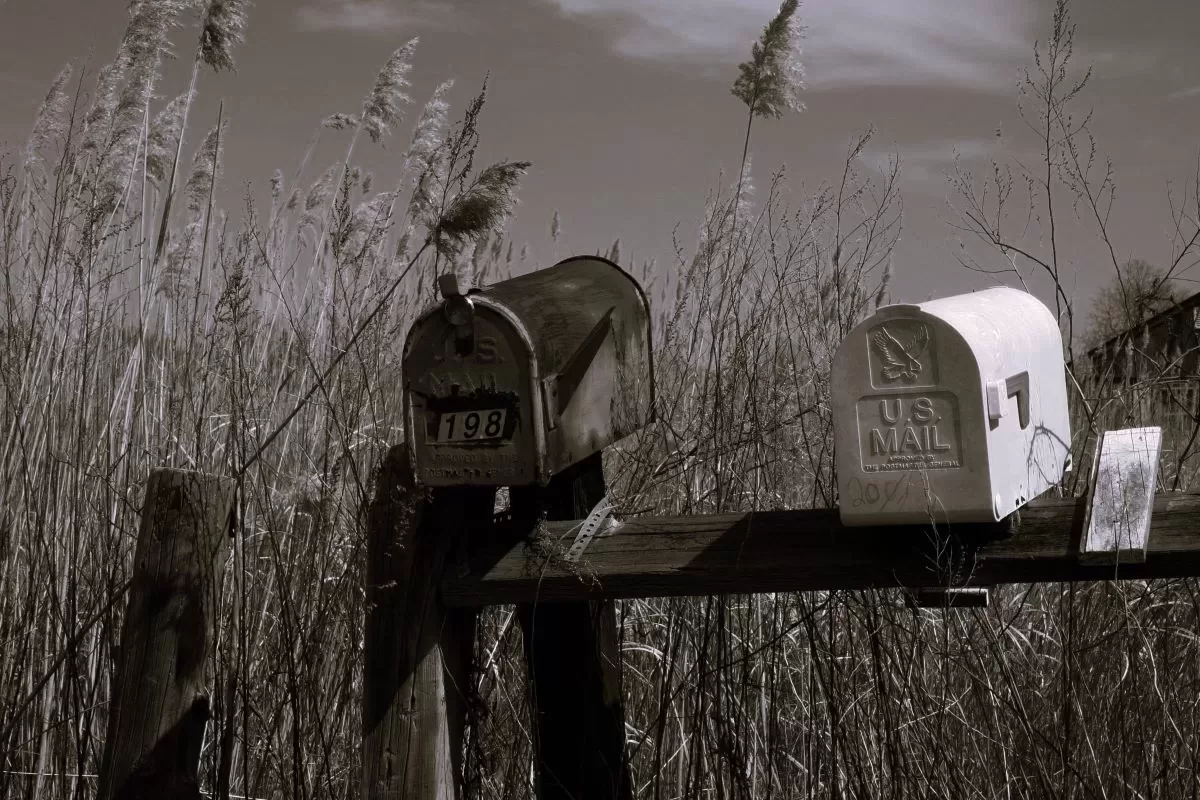The rural mailboxes that marked the turning point to farmhouse laneways dotting the Kansas countryside were landmarks to those wandering the dusty county roads of the Sunflower State. When I was a child, those beacons were the only way to know you had arrived in an era when county roads had not been given street names, farmhouses had no street numbers, no one had GPS, and when mail was still delivered in the country by a rural route number. Rural mailboxes were like pins on a map, identifying who lived where, baptizing the rich farm- and ranchland with their owners’ names. Some were plain metal, others were decorated like a tractor or barn, and some showed their years in rusty age spots, but whatever their appearance, their meaning was the same: turn here.
Directions to my family’s farmhouse in the Flint Hills were no different, and they always included the instruction to watch for the cavernous, white, metal mailbox with my father’s name. It was the waypoint at which to turn, but for me, a dreamer of distant lands and faraway lanes, it was also the gateway to the world beyond. We had four channels of television and a black rotary telephone on a party line when I was a child. In the summer or on school breaks, days might pass on the farm before I would see anyone other than my immediate family. I spent my time reading, playing outside with my dog and cats, swimming in the creek in the summer, sledding down the hill in the winter, taking walks out the lane and down the county road, and generally entertaining myself. The mailbox was often my one contact with the outside world, and opening it to see what had been sent was like opening a portal to infinite possibilities. Even as a child, I was thrilled to receive a birthday card, and the monthly arrival of my Highlights magazine was a much-anticipated event. Sometimes, I sent letters to relatives and friends, leaving my missives in the mailbox and expectantly raising the red flag on its metal arm so the rural mail carrier would know to stop. And there was always the hope someone would reply. Walking out the long laneway to go get the mail or to leave something to be sent was never a chore; it was a journey towards possibility.
That same sense of wonder and excitement accompanied me as a teen. I had made several pen pals across the country and around the globe, and I received more letters from classmates over the summer. Then, I began to prepare for college, and my steps out the lane were accompanied by the expectation of my results from Advanced Placement exams and the ACT. As college admissions letters and scholarship announcements came during my senior year of high school, that magical mailbox was finally fulfilling my ambitions and opening doors for me to explore the world. Each time I passed the mailbox on one of my long walks out the lane, down the county road, and up the hill, it fueled my dreams that much more. I always wondered what I might find the next time I opened it.
Soon, I left for college, driving past the mailbox, and feeling I’d made a definitive turn at that laneway landmark. Kansas State University and Manhattan, Kansas were only 90 miles away, but they were the different world I’d imagined. My hope that came each day with the mail accompanied me to college, and I went expectantly to check for letters, cards, and even the occasional care package in my box. I thrived at K-State, but anytime I went home, I mentally clicked off the miles to the mailbox, my final turn. Sometimes, during breaks, college friends would visit me, and I shared the same set of time-honored directions to the farm. They always assured me the directions had been true. “I knew exactly where to turn when I saw the mailbox,” they’d say.
My studies and experiences took me miles away from that trusty landmark. I lived abroad for summers and an academic year, and when I sent letters and postcards from places with exotic postmarks, I envisioned them arriving in an old, white mailbox at the end of a dusty lane. The friends I made on those trips wrote me after I’d left, sending notes and cards, sketches, poems, and gifts. Then, it took days or weeks for a letter to arrive, time for friends to respond and for their letters to travel back the many miles to me. Patience, hope, and expectation were all part of the letter writing exercise. The mailbox brought all my friends closer, despite the miles.
I’ve never quite been able to give up the sense of anchoring I feel with a mailbox, or that feeling of hope, possibility, and connection. My mailbox at my home in town is still part of the directions to my house, and I feel a stirring somewhere deep within each time I open it, despite the preponderance of junk and bills. And anytime I find myself on a dusty county road, I watch for the rural mailboxes, those laneway landmarks, wondering what other spaces and turns they mark for the names upon them.
The big, white mailbox still stands, although the roads have been christened with new names for emergency vehicles, and the farm has a street number now. It’s still part of the directions to the farmstead, still a pin on the map of rural life in that Kansas county, a waymark to my dreams of the past. To some, it might look tired and outdated, but in my imagination, it will always be the place to turn and a passport to possibility. The outside world found its way into my life, and I, into it, thanks to that rural mailbox.
![]()
![]()
![]()
![]()
![]()
![]()
 Learn more about Julie on our Contributors’ Page.
Learn more about Julie on our Contributors’ Page.
Julie’s latest book, Ann of Sunflower Lane, was published by Meadowlark Press and is available here.
(Photo: Kris Notaro/flickr.com/ CC BY 2.0)
Beginner and Intermediate Fiction Writing Course
Join a university level course delivered on Zoom by Ryan Dennis.
Sundays, 6pm-8pm GMT (Ireland)/ 1pm-3pm EST (New York) from March 24th to May 12th, 2024.
This 8-week online course explores specific, craft-based techniques, from concepts to the words on the page.
Cost $185/170€. More details here.
- Laneway Landmarks by Julie A. Sellers - January 11, 2024




